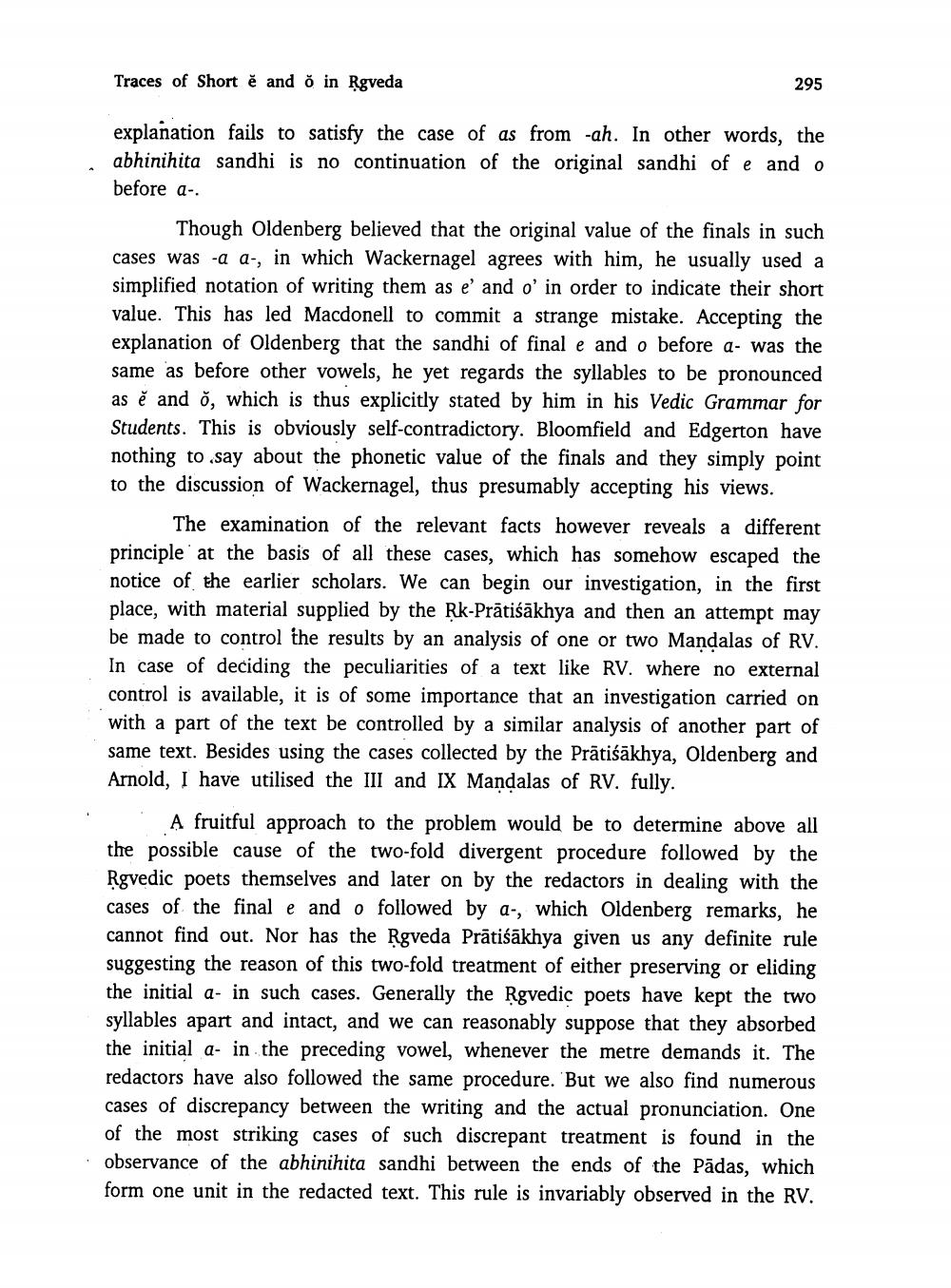________________
Traces of Short ě and o in Rgveda
295
explanation fails to satisfy the case of as from -ah. In other words, the abhinihita sandhi is no continuation of the original sandhi of e and o before a
Though Oldenberg believed that the original value of the finals in such cases was -a a., in which Wackernagel agrees with him, he usually used a simplified notation of writing them as e' and o' in order to indicate their short value. This has led Macdonell to commit a strange mistake. Accepting the explanation of Oldenberg that the sandhi of final e and o before a- was the same as before other vowels, he yet regards the syllables to be pronounced as ě and o, which is thus explicitly stated by him in his Vedic Grammar for Students. This is obviously self-contradictory. Bloomfield and Edgerton have nothing to say about the phonetic value of the finals and they simply point to the discussion of Wackernagel, thus presumably accepting his views.
The examination of the relevant facts however reveals a different principle at the basis of all these cases, which has somehow escaped the notice of the earlier scholars. We can begin our investigation, in the first place, with material supplied by the RK-Prātiśākhya and then an attempt may be made to control the results by an analysis of one or two Mandalas of RV. In case of deciding the peculiarities of a text like RV. where no external control is available, it is of some importance that an investigation carried on with a part of the text be controlled by a similar analysis of another part of same text. Besides using the cases collected by the Prātiśākhya, Oldenberg and Arnold, I have utilised the III and IX Mandalas of RV. fully.
A fruitful approach to the problem would be to determine above all the possible cause of the two-fold divergent procedure followed by the Rgvedic poets themselves and later on by the redactors in dealing with the cases of the final e and o followed by a-, which Oldenberg remarks, he cannot find out. Nor has the Rgveda Prātiśākhya given us any definite rule suggesting the reason of this two-fold treatment of either preserving or eliding the initial a- in such cases. Generally the Rgvedic poets have kept the two syllables apart and intact, and we can reasonably suppose that they absorbed the initial a- in the preceding vowel, whenever the metre demands it. The redactors have also followed the same procedure. But we also find numerous cases of discrepancy between the writing and the actual pronunciation. One of the most striking cases of such discrepant treatment is found in the observance of the abhinihita sandhi between the ends of the Pādas, which form one unit in the redacted text. This rule is invariably observed in the RV.




